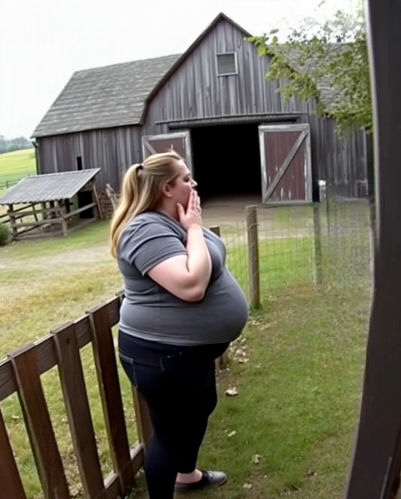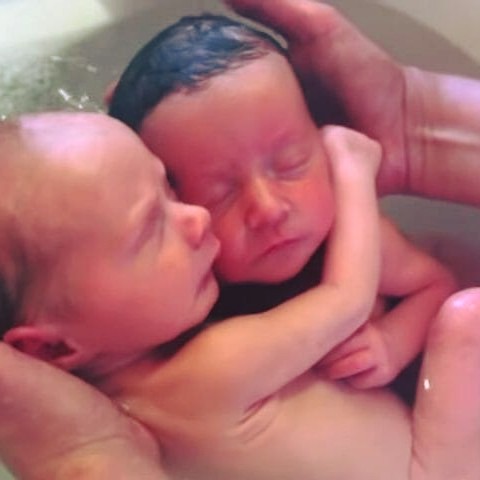There are moments in life when curiosity outweighs caution, when the desire to understand pushes us into places we never expected. For me, that moment came one crisp morning when I decided to visit our country house without telling my husband, Daniel. On the surface, I told myself it was harmless—a brief escape to enjoy the quiet countryside, a chance to clear my mind. But beneath that simple rationale, I knew I was searching for something deeper: answers to questions I had been too hesitant to voice.
Over the past several months, Daniel had been spending more and more time at the country house. Each time I asked about his trips, he offered vague explanations—“work around the property” or “small repairs.” At first, I accepted his reasoning. But over time, his insistence that I stay home began to feel less like care and more like evasion. His gentle protests—“You’ll just get bored out there. Stay home and relax”—started to sound like shields rather than invitations.
That gray morning, while Daniel assumed I was out running errands in town, I packed a small bag, set my GPS to the country house, and drove. I imagined discovering nothing more than a hobby or a new project he had quietly started. I could never have predicted the truth that awaited me—a revelation that would test both my trust and my perception of the man I thought I knew.
Arrival at the Country House
The drive itself was soothing. Rolling hills stretched endlessly on either side of the road, bare trees swaying in the morning wind. Each mile seemed to peel away the stress of city life, leaving only the anticipation of what lay ahead. By the time I pulled into the gravel driveway, a mix of apprehension and curiosity had taken root in my chest.

The house appeared unchanged from the outside—rustic and charming, with weather-worn shutters and ivy crawling along stone walls. Yet, that day, it seemed different. There was a quiet stillness in the air, a pause that felt almost deliberate, as if the house itself knew I was about to uncover something important.
I turned the key in the lock, and the door creaked on its old hinges—a sound I had heard countless times before. Normally, it would have comforted me, a familiar signal that I was home. But that morning, the familiar creak echoed with an unexpected weight, as though warning me to proceed carefully. The interior smelled faintly metallic, a subtle scent that didn’t belong but wasn’t immediately unpleasant.
The Uneasy Silence
Moving slowly from room to room, I noticed the usual orderliness of the house. Firewood stacked neatly by the hearth, Daniel’s jacket draped over a chair, everything in its expected place. Yet the silence pressed on me, filling the rooms in a way that was both calming and unnerving.
I anticipated finding Daniel, perhaps tinkering with tools or reading quietly by a window. But the house was empty—or so I thought.
A small curiosity nudged me toward the basement. It was a place I rarely visited, often dismissed as Daniel’s private workspace. Typically, he insisted I leave it alone, calling it “my little corner for projects.” Normally, I would have respected his boundaries. That day, however, curiosity guided my steps.
The Basement Discovery
The basement door stood slightly ajar, a narrow slice of light spilling into the darkened stairwell. As I descended, the air grew cooler and carried an earthy tang. My eyes adjusted, and the room slowly came into focus.
At first glance, it resembled a workshop—Daniel’s usual workbench lined with jars, notebooks, and tools. But these items were unfamiliar. The notebooks were stacked neatly, pages filled with diagrams, observations, and careful notations. Glass jars contained soil samples, rocks, and bits of plant roots.
As I examined the materials more closely, I realized that what I had assumed were random curiosities were, in fact, part of a meticulous research project. Each jar was labeled with dates, times, and notes on environmental conditions. The notebooks contained observations about plant growth, soil quality, and changes in local flora. Daniel had been conducting independent research on the land surrounding our country house, and it was far more involved than anything I could have imagined.

Photographs on the Wall
Above the workbench, rows of photographs were pinned carefully. Initially, I hesitated; faces stared back at me—our children, friends, even my own. My first thought was fear, a sense that these images carried some hidden purpose. But as I studied them, the truth emerged. These photographs were records tied to his research. Small notes on the back detailed weather patterns, seasons, or growth stages: “after the storm,” “spring bloom,” “summer drought.”
Rather than being sinister, the photos were documentation—a visual log of the changing environment. The unease I had felt began to dissolve, replaced by curiosity and a growing admiration for Daniel’s dedication.
The Confrontation
Just as I turned to leave, I heard footsteps above. My heart leapt. Within moments, Daniel appeared in the doorway, his face pale with surprise.
“Emma,” he whispered, his voice tight, “what are you doing here?”
I swallowed my nerves, holding one of his notebooks in my hands. “I could ask you the same thing,” I said. “What is all this?”
For a long moment, silence hung between us. Finally, Daniel exhaled, his shoulders slumping as though the weight of secrecy had become too heavy to carry. “It’s research,” he admitted. “I didn’t want to tell you until I was certain it was meaningful.”
Understanding the Truth
Piece by piece, Daniel explained his work. He had noticed subtle environmental changes around the property—soil erosion, unusual plant growth, shifts in local air quality. What began as casual observation evolved into a rigorous investigation. He documented every detail meticulously, hoping to understand patterns and make a contribution to environmental knowledge.
“I know it seems strange,” he said, his eyes searching mine. “But this land… it’s changing. And if I can understand it, maybe I can help.”
Frustration and admiration warred within me. I was frustrated he had kept this from me, but I couldn’t deny the dedication, passion, and significance of what he had undertaken. In that moment, I realized my assumptions had led me astray; this was not secrecy born of deception, but of caution and devotion.
Rediscovering Trust
That evening, we sat in the living room surrounded by stacks of notebooks, jars, and photographs. Daniel walked me through his findings, each observation shared with excitement and reverence. For the first time in months, I saw the spark that had drawn me to him years ago—the passion, curiosity, and commitment to something greater than ourselves.
I understood then that my secret visit had been less about exposing him and more about reconnecting. Daniel’s hesitation to share his project had not been an act of betrayal; it was born from the vulnerability inherent in revealing something deeply personal. By stepping into that space, by asking questions instead of judging, I had found not just the truth but a path back to intimacy and understanding.
Moving Forward Together
Over the following weeks, our dynamic shifted. I began joining Daniel in his research, assisting with observations, cataloging samples, and helping him organize his findings. What began as suspicion transformed into collaboration, curiosity into shared purpose. The project that had initially felt like a barrier now became a bridge, a way to strengthen our partnership and deepen our bond.
Through this experience, I learned an important lesson about trust: it is not simply the absence of secrets, but the courage to share, to listen, and to understand, even when intentions are initially unclear.
Reflection and Growth
Looking back, I realize how easily I could have misinterpreted that day. Had I left without seeking clarity, I might have filled my mind with fear, doubt, or suspicion. Instead, by remaining present and open to explanation, I discovered not deception, but dedication and love.
The country house, once a symbol of distance and secrecy, became a sanctuary of discovery—both of the land around us and of our relationship. The notebooks, jars, and photographs were not evidence of wrongdoing but of curiosity, care, and passion, qualities that had always defined Daniel and the life we share.
The Greater Lesson
This experience taught me something universal: often, the truths we fear most are not destructive but enlightening. Curiosity, when guided by patience and understanding, can reveal hidden dimensions of life, relationships, and the people we think we know best.
Sometimes, the act of uncovering the truth is less about judgment and more about connection. It requires empathy, openness, and the willingness to challenge assumptions. By seeking understanding instead of confrontation, we often discover that the secrets we imagine are far less ominous than the dedication and intention behind them.
Conclusion
The day I drove to our country house alone, I anticipated suspicion, perhaps even betrayal. What I found instead was a hidden world of curiosity, dedication, and discovery. Daniel’s research project, meticulously documented and passionately pursued, was a testament to his love for knowledge and his desire to engage meaningfully with the world around us.
More importantly, the experience reminded me that trust is a living, evolving bond. It is not destroyed by mystery, nor is it strengthened solely by transparency. It grows when we approach one another with patience, openness, and a willingness to understand, even when the surface seems uncertain.
Our country house no longer feels like a place of secrets. It has become a place of shared purpose, exploration, and rediscovery—a testament to the resilience of love and the power of curiosity.
Life will always hold mysteries, but sometimes, the greatest discoveries are not found in what is hidden, but in the courage to uncover, understand, and embrace them.



